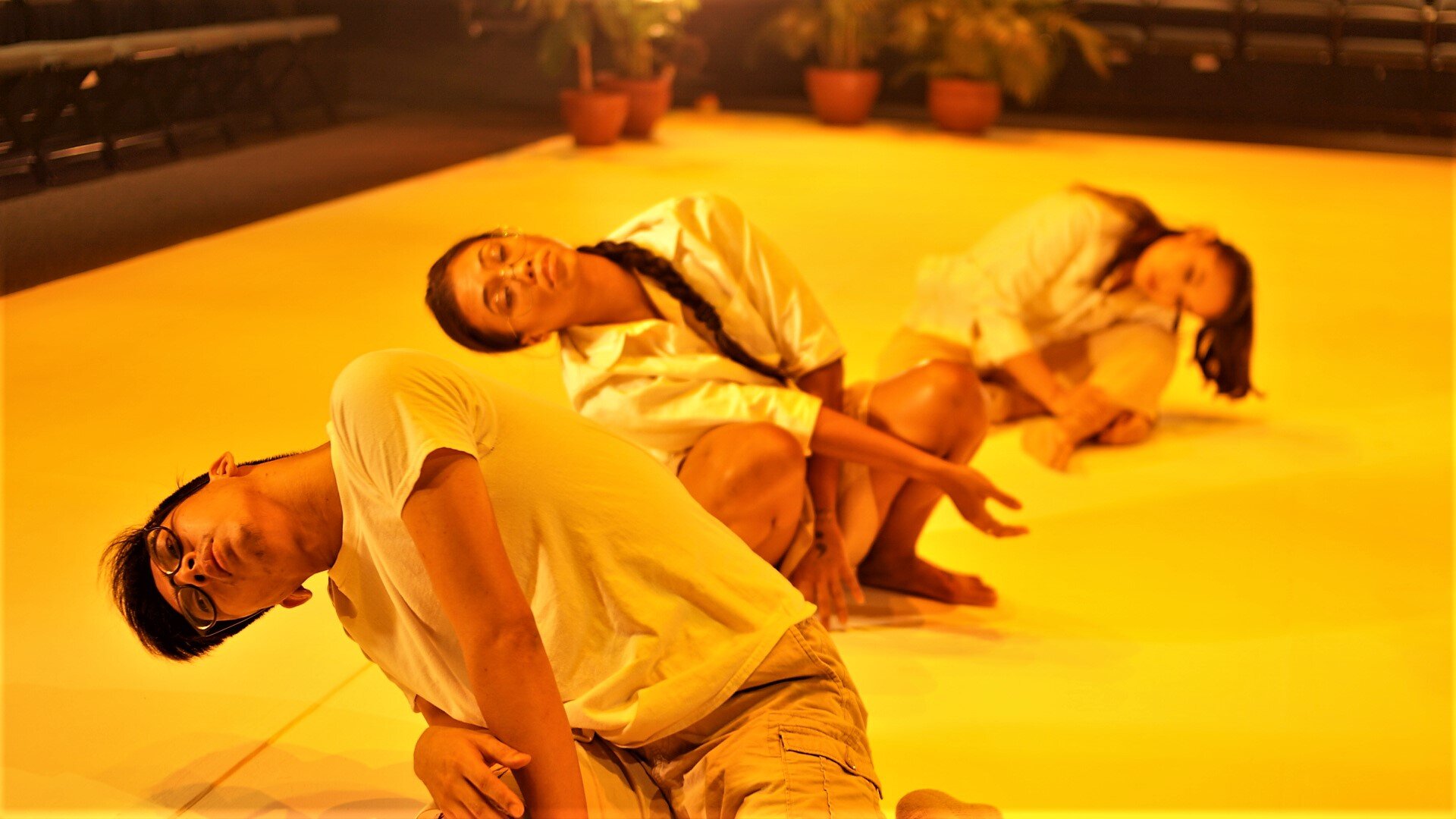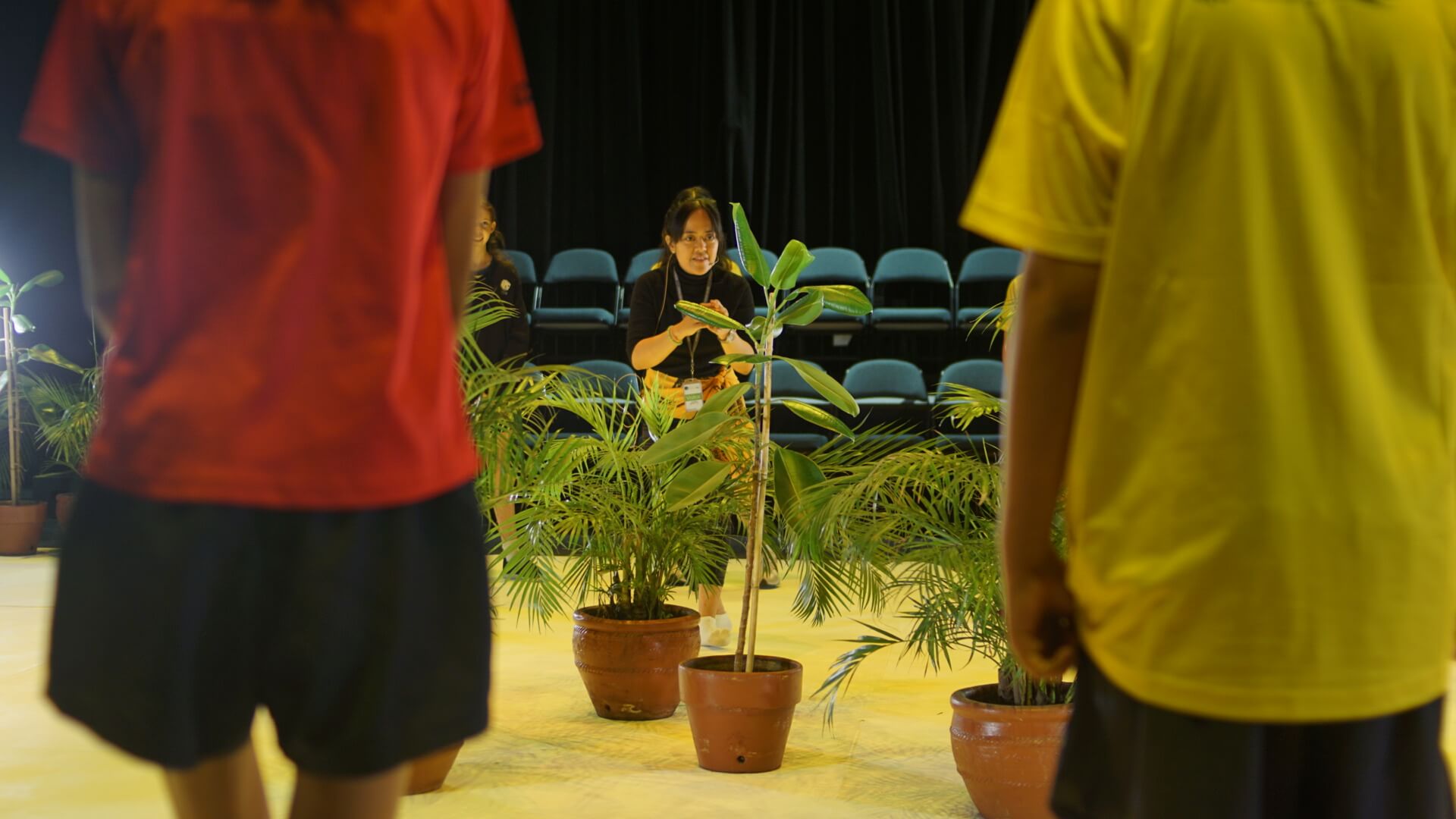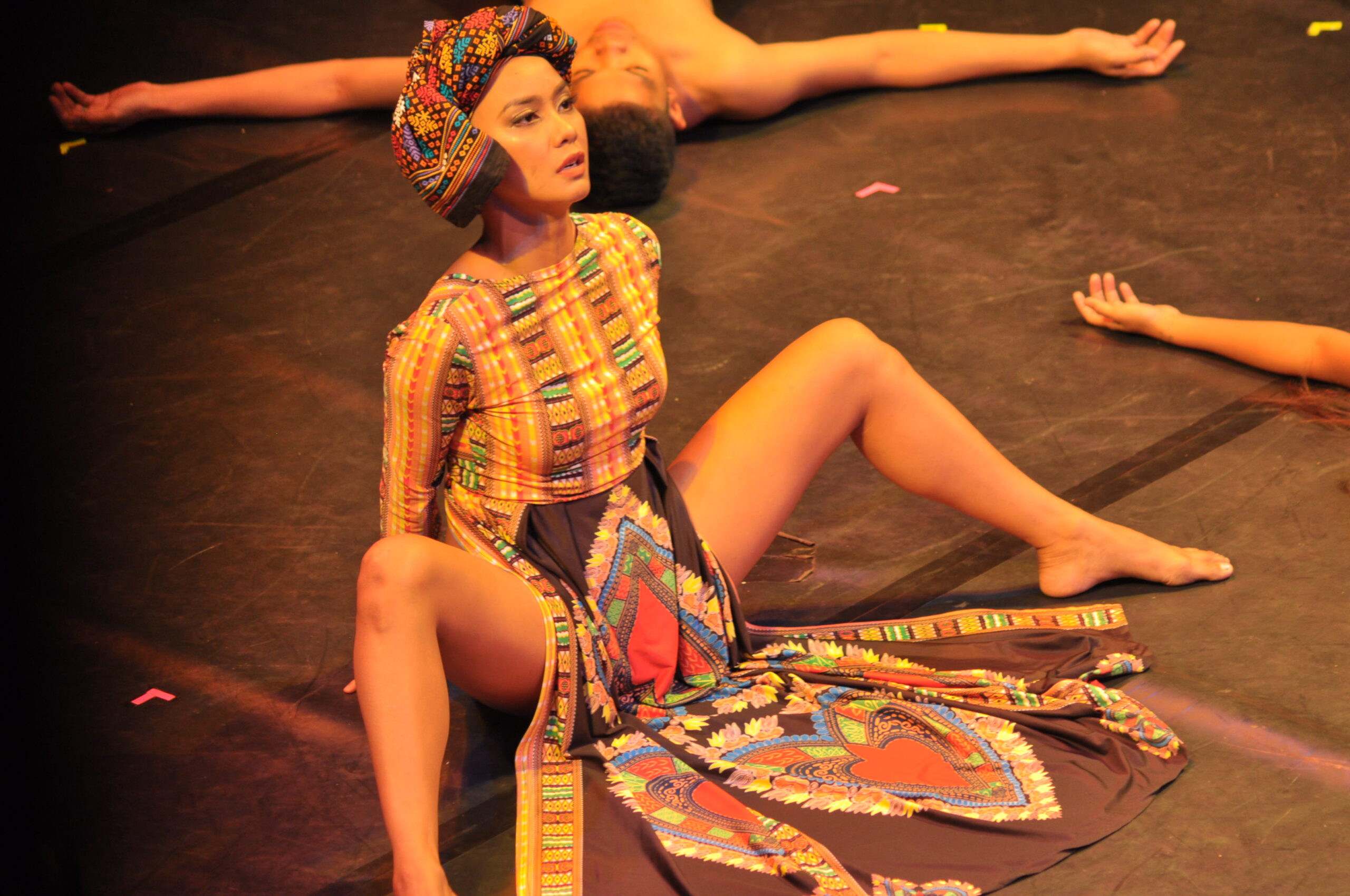In their latest collaboration with a Manila-based international school, one Filipino contemporary dance company showcases the meaningful ethos that drives their organization.
On March 30, the Daloy Dance Company performed in the British School Manila’s (BSM) Creative Arts Centre. The acclaimed organization, which was established in 2014, is known for its innovative contemporary performances and advocacy to educate the public through dance workshops.
As such, Daloy’s collaboration with an esteemed educational institution like BSM is to be expected. The partnership not only aimed to showcase one of the company’s latest pieces, but also provide enrichment to the school’s students through a series of workshops.
READ ALSO: The Lucky Ones: Meet The Two Filipina Musicians Joining Taylor Swift’s Eras Tour
Daloy’s performance was titled ItikLandia, as it was inspired by the traditional Filipino folk dance Itik-itik, which mimics the movements of ducks (hence the name). Daloy Dance Company founder and artistic director Ea Torrado describes the experimental piece as “a physicalized hymn to the natural world we all share, live, and thrive in.”

A Call for Change and a Story of Hope
Influenced by Francesca Reyes-Aquino’s seminal book entitled Philippines Folk Dances, the performance showcased the inextricable link between nature and culture through choreography instilled with ecological reverence and rich communal traditions. Performed by dancers Deborah Lemuel, Julienne Depatillo, Jomarie Cruz, and Brian San Miguel, the piece paid homage to Filipino animistic history.

Also depicted was the heart-rending deterioration of the environment—and in turn, tradition—in the hands of rapid urbanization, displacement, and gentrification, as well as the feelings of helplessness and isolation that arise from such seemingly insurmountable problems.
“The people and places you love? Destroyed,” echoed the melancholic audio commentary. Projections of fluffy ducklings were replaced by tall skyscrapers and news clips of natural disasters.



Despite the destruction it depicts, the performance ends on a hopeful note, one that completes ItikLandia’s urgent message for social change. Performers carried potted plants to the center of the stage, planting seeds and watching the ducklings return, leaving the audience to contemplate our place in nature and ability to make a mark on it—for better or worse.

Art for the Youth
Prior to the performance, members of Daloy Dance Company facilitated a series of workshops for Year 8 BSM students, which walked them through the process of creating ItikLandia. Led by Malaya Arguelles, participants got to perform certain parts of the piece, as well as engage in physical theater exercises, embodied storytelling, and play.

“When we returned to school in August, we knew that we wanted to make the arts vital and rewarding and fun, because we’d spent so much time online, sitting at computers isolated,” shared Paul Hannon, a faculty member of BSM’s Drama Department, in an exclusive interview with Lifestyle Asia.
“We knew coming back that this year, it was a priority for us to get kids physical again, to consider how they show meaning and communication, because it’s vital. The school’s vision and mission is all about holistic education and positive contributions to society and global citizenship, and this ticked so many boxes, we knew it would be fun,” he elaborated.

Indeed, this seemed to be the right call, as many workshop participants enjoyed the hands-on experience of performing and collaborating with their peers. “You know, the kids, they love this; they loved working with Daloy and exploring Itik-itik. Some of those kids, their life has changed a little bit today. They dream now of being creators, dancers, technical theater practitioners. I just think that’s a beautiful thing, and necessary,” shared Hannon.

Collaboration and Exploration
The founder of Daloy Dance Company, Ea Torrado, was actually classically trained in ballet prior to pursuing a career in more experimental dance. Her list of accomplishments is a long one; she has toured internationally as a member of acclaimed organizations like Ballet Manila, Ballet Philippines, and Dance Theatre of Tennessee, to name a few. Her accolades include the prestigious Alvin Erasga Tolentino Koreograpiya Award (2014), Remedios De Oteyza Award for Choreography (2016), and Asian Cultural Council Grant (2016).

“When I hung up my ballet shoes, it was a clear decision to move to contemporary dance and also to make my own choreographic work. And also to make work that is not easily recognizable as one thing, but rather a hybrid and influence of many things; to make interesting work that is experimental and collaborative,” she shared with Lifestyle Asia.

To Torrado, the process of creating innovative pieces is never a fixed one. She compares it to the intuitive nature of not cooking by the book—one tastes the food, then works from there, adding ingredients as they go to create a new and tasty dish. She also believes that bringing a piece to life is a group effort, or as a spin to the old adage, it takes a village to “raise” a performance.
“It’s so different from the traditional way of making dances wherein a choreographer comes in, and then you have the dancer as ‘clay’ and then one person as the ‘potter,’” she explained. “Rather, it’s distributing ideation, movement, research, and dramaturgy to all the key players on the stage, creating a more meaningful, meaty, and substantial work out of it.”
Torrado described the creative process as very “go with the flow,” something more improvisational and organic. “[We don’t say], ‘This is the script and we’re gonna make a dance out of it,’” she expounded. The performers each contribute their own ideas, they see what works, and the rest follows.
Promoting Education And Transformation Through Performance
Torrado’s decision to explore more contemporary forms of performances was a purposeful one. At the core of many of her endeavors is a passion for education and exploration, a goal to show the world how the performing arts can be a tool for sparking transformation by exploring and questioning aspects of society.
Some examples of this ethos include her works Dysmorphilia (2014) and Pieces of Me (2015), which investigate notions of personal confinement and depict non-linear stories where the characters attempt to journey from disempowerment to liberation and/or despair.

Torrado’s belief in the power of performance is how Daloy Dance Company came to be, with their daring and evocative theater pieces, and an ever-evolving group of artists from diverse backgrounds.
“We take pride in knowing that we have very versatile dancers who are trained in folk dance, jazz, hip-hop, ballet, modern dance. For this particular piece [ItikLandia], they’re all professional dancers and also teachers. So we call them ‘teaching artists,’” she shared.


To Torrado, dance is “no longer just a style, a genre, a form, a syllabus, but something that could go beyond these labels and become accessible to people of all ages, sizes, shapes, genders and backgrounds.”
That’s why Daloy offers a number of workshops that help performers cultivate a deep and intuitive self-awareness. As for non-dancers, these classes teach them to use “mindful and liberating movement” as a way to achieve centeredness and personal growth.

It was through the organization that Torrado was able to formulate the “Daloy Movement Meditation,” a type of dynamic meditation that gives way to free-form dance. From the Filipino word “Daloy” which means “flow,” the innovative dance takes inspiration from other movement forms that she immersed herself in over the years, such as Yoga, Reiki, Physical Theatre, Viewpoints Technique, and Improvisation.
The Daloy Movement Meditation is a tool to provoke self-reflection, mindfulness, abandon, and release. Besides promoting overall well-being, the movement is also a way of embracing Filipino roots through its universal wisdom of pakikipagkapwa and reclamation of the Bahala Na (Bathala Na) tradition.
Photos courtesy of Daloy Dance Company.





